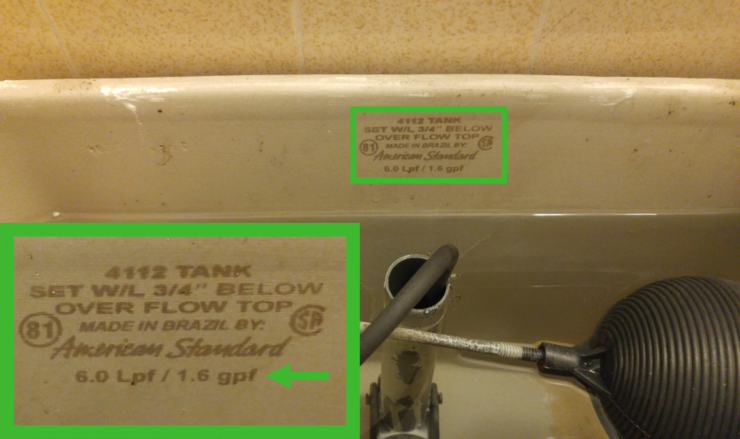Toilets are the top water user in homes. Understanding how much water your toilet uses and replacing an old toilet with a new, efficient one can save a lot of water.
Toilet water use standards
Toilet water use is measured in gallons per flush, which is usually shortened to “gpf.” Federal plumbing code requirements for toilet water use have changed a lot over time. Toilets manufactured before 1982 use 5 to 7 gpf. Washington State code now requires that all new manufactured toilets use no more than 1.28 gpf.
Toilets that use less water and also meet performance criteria may have a WaterSense label if they use 1.28 gpf or less. WaterSense toilets may have a MaP Premium rating if they use 1.1 gpf or less.
How to tell how much water a toilet uses
The gallons per flush (gpf) rating
In many cases, the toilet will have the gpf rating stamped or printed on it in one of these places:
- The back wall of the tank
- Behind the seat
- The underside of the tank lid


The manufacture date
If there is no gpf rating on the toilet, manufacture date is the next best option. If you know when the toilet was manufactured, you can determine how much your toilet uses, or a range that it might use. Toilets often have a date stamp, which may be found in one of these places:
- On the back wall of the tank
- On the underside of the tank lid
Here are common flush volumes of toilets and the time periods they were manufactured:
- 5 to 7 gpf before 1982
- 3.5 gpf 1982 to 1992
- 1.6 gpf 1993 to present
- 1.28 gpf 2004 to present
- 1.1 gpf or less 2014 to present


If your toilet doesn’t have any of this information on it, it’s likely an older toilet. Consider the year your home or building was built or last had a major remodel. The toilet was likely manufactured around that time.